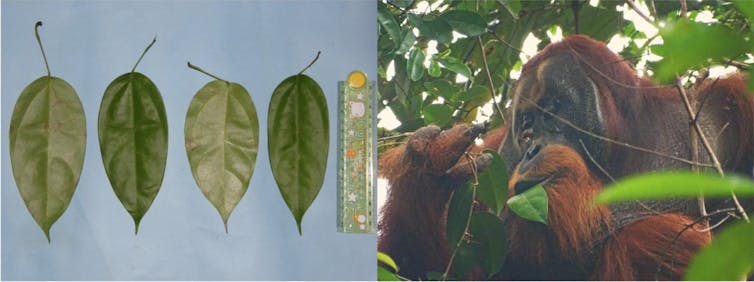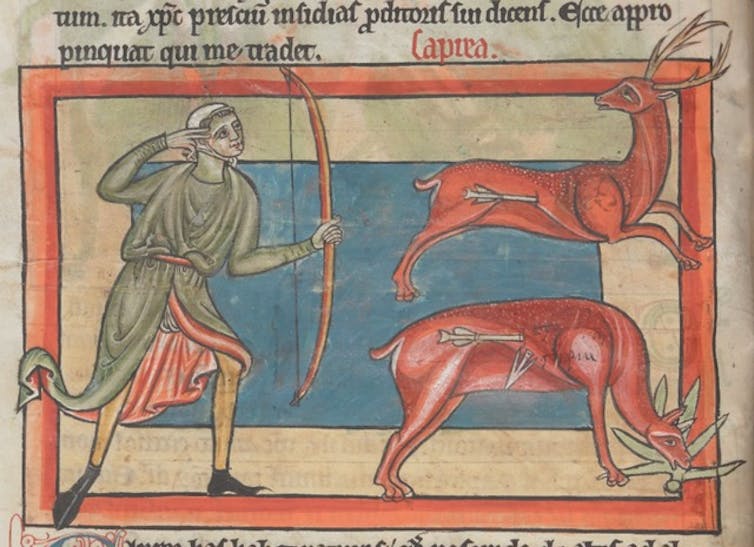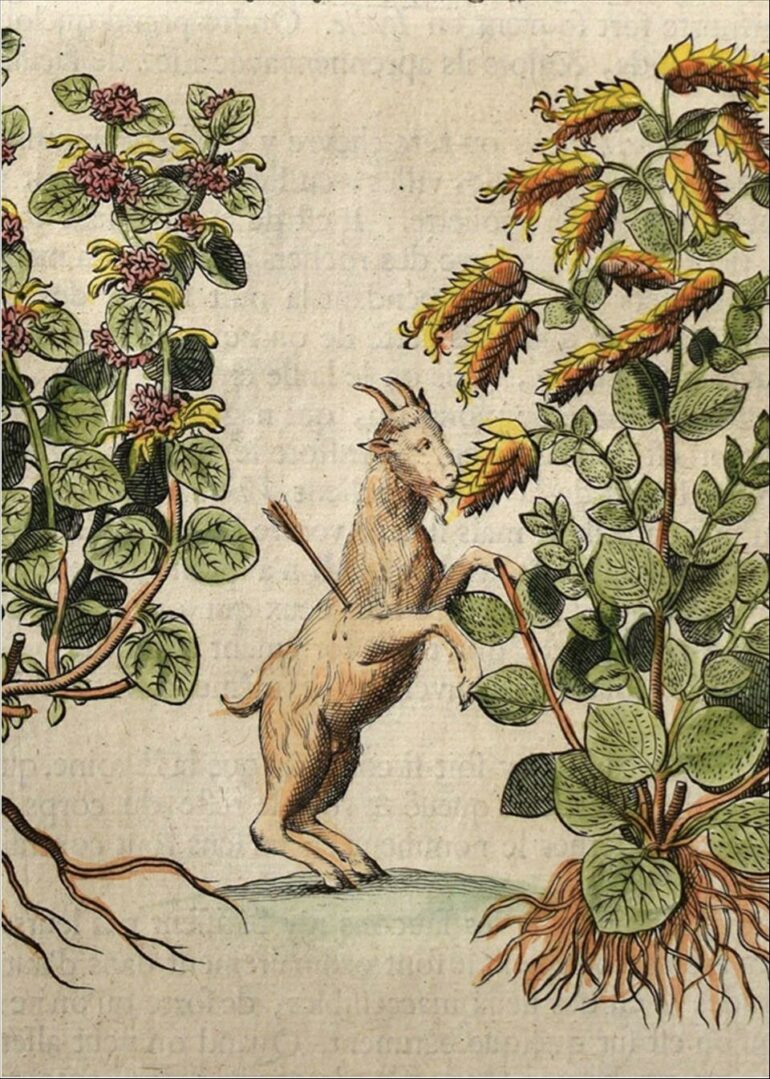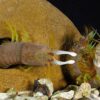When a wild orangutan in Sumatra recently suffered a facial wound, apparently after fighting with another male, he did something that caught the attention of the scientists observing him.
The animal chewed the leaves of a liana vine – a plant not normally eaten by apes. Over several days, the orangutan carefully applied the juice to its wound, then covered it with a paste of chewed-up liana. The wound healed with only a faint scar. The tropical plant he selected has antibacterial and antioxidant properties and is known to alleviate pain, fever, bleeding and inflammation.
The striking story was picked up by media worldwide. In interviews and in their research paper, the scientists stated that this is “the first systematically documented case of active wound treatment by a wild animal” with a biologically active plant. The discovery will “provide new insights into the origins of human wound care.”

Fibraurea tinctoria leaves and the orangutan chomping on some of the leaves.
Laumer et al, Sci Rep 14, 8932 (2024), CC BY
To me, the behavior of the orangutan sounded familiar. As a historian of ancient science who investigates what Greeks and Romans knew about plants and animals, I was reminded of similar cases reported by Aristotle, Pliny the Elder, Aelian and other naturalists from antiquity. A remarkable body of accounts from ancient to medieval times describes self-medication by many different animals. The animals used plants to treat illness, repel parasites, neutralize poisons and heal wounds.
The term zoopharmacognosy – “animal medicine knowledge” – was invented in 1987. But as the Roman natural historian Pliny pointed out 2,000 years ago, many animals have made medical discoveries useful for humans. Indeed, a large number of medicinal plants used in modern drugs were first discovered by Indigenous peoples and past cultures who observed animals employing plants and emulated them.
What you can learn by watching animals
Some of the earliest written examples of animal self-medication appear in Aristotle’s “History of Animals” from the fourth century BCE, such as the well-known habit of dogs to eat grass when ill, probably for purging and deworming.
Aristotle also noted that after hibernation, bears seek wild garlic as their first food. It is rich in vitamin C, iron and magnesium, healthful nutrients after a long winter’s nap. The Latin name reflects this folk belief: Allium ursinum translates to “bear lily,” and the common name in many other languages refers to bears.

As a hunter lands several arrows in his quarry, a wounded doe nibbles some growing dittany.
British Library, Harley MS 4751 (Harley Bestiary), folio 14v, CC BY
Pliny explained how the use of dittany, also known as wild oregano, to treat arrow wounds arose from watching wounded stags grazing on the herb. Aristotle and Dioscorides credited wild goats with the…



